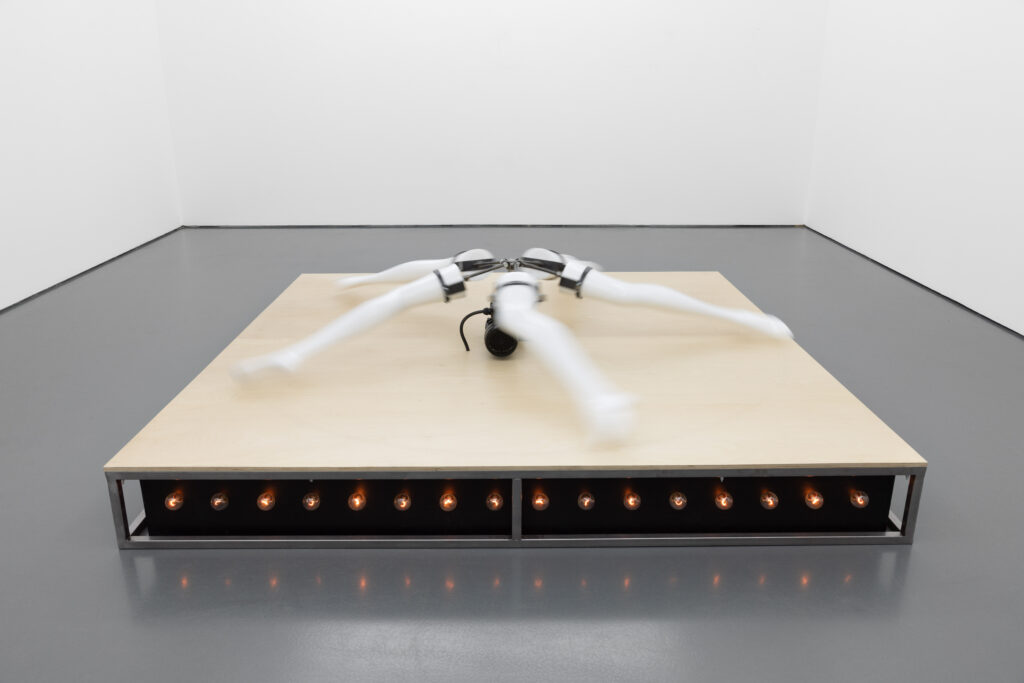T.GIRLS, 2019-2024
mannequin legs, industrial motor with reduction, inverter drive, wood, steel, lamps,
dimmer rack, arduino, electronic circuit
210 × 210 × 55 cm | 82.68 × 82.68 × 21.65 in
> presented at Art Basel 2024 with Pedro Cera
The five mannequin legs form a dancing machine. The title “T.GIRLS” refers to the famous group of dancers known as Tiller Girls. The group appears as a symbol of a modernity taken by a curious contradiction between the praise of the individual and individualism, and its dissolution into an amorphous whole. However, the belief in the individual is a false statement, only valid for the consumer’s appeal. The German philosopher linked to Frankfurt School, Siegfried Kracauer, affirms that “The process began with the Tiller Girls. These products of American distraction factories are no longer individual girls, but indissoluble girl clusters whose movements are demonstrations of mathematics” .
The intense training – almost military – that these women were subject to in order to produce an immense number of lines, that swayed in perfect parallels, and to obtain a trace of unthinkable proportions on stage, would be desirable to train increasingly larger human masses. The movements, like a kaleidoscope, are drained of any ritualistic meaning that “take place in a vacuum; they are a linear system that no longer has any erotic meaning but at best points to the locus of the erotic” . Just as the industrial worker is alienated from his own work, and although the “masses give rise to the ornament, they are not involved in thinking it through. […] Actors likewise never grasp the stage setting in its totality, yet they consciously take part in its construction” . The idea of linearity also leads us to think about the relationship with the assembly line as a strategy for alienating work. The parts do not understand or dominate the whole. Each one executes their small action on the assembly mat, performing a partial function, without knowing the whole.
There also seems to be a fracture in the very minimum elements that would be each “individual” of this organism. “The Tiller Girls can no longer be reassembled into human beings […]. Arms, thighs, and other segments are the smallest component parts of the composition” . These minimal body parts do not have any type of personality either, they must dissolve. This is how the Tiller Girls served to propagate a modern ideal of society, exporting to the world an image of a completely capable and efficient American industry. “The mass ornament is the aesthetic reflex of the rationality to which the prevailing economic system aspires” .
“T.GIRLS” was presented for the first time as a central part of the theatrical play without actors “head hollow doll foam” in 2019, at Firma, and later the play premiered at SESC Pompéia, in 2022 (both in São Paulo, Brazil). The first time the work has been presented outside the context of the play, with an autonomous choreography, was at ArtBasel Basel 2024.
KRACAUER, Siegfried. The Mass Ornament. Harvard University Press, 1995.

